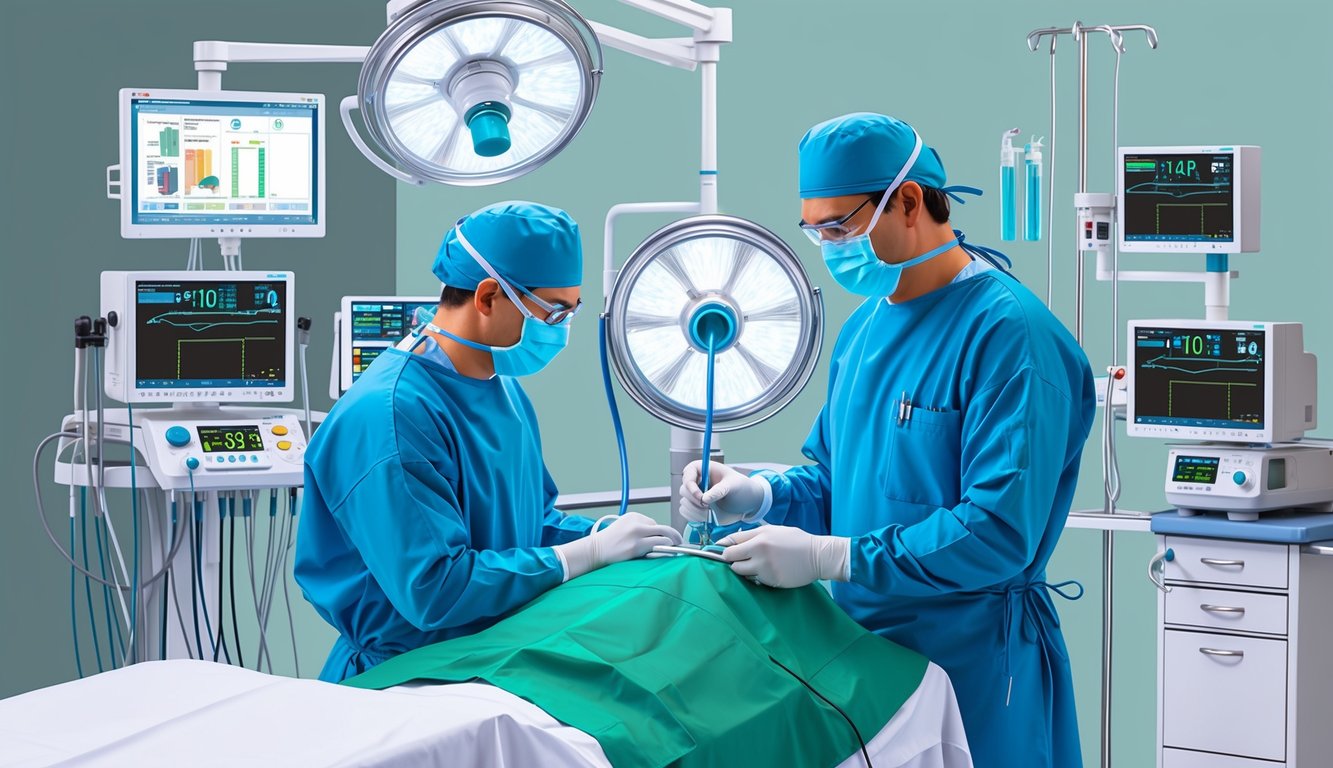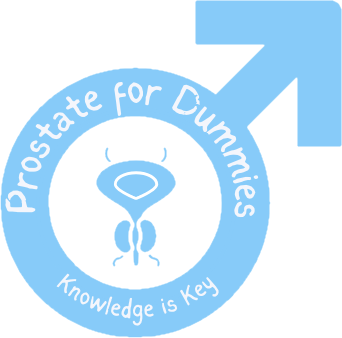Transurethral resection of the prostate (TURP) is a surgical procedure used to treat benign prostatic hyperplasia (BPH), a condition where an enlarged prostate causes urinary problems. TURP is considered the gold standard for treating moderate to severe BPH symptoms, offering significant improvement in urinary flow and quality of life for many patients.

The procedure involves removing excess prostate tissue through the urethra, eliminating the need for external incisions. While TURP is generally safe and effective, it’s important for patients to understand potential risks and outcomes. Retrograde ejaculation is a common long-term complication, affecting up to 75% of men who undergo the procedure.
Recovery from TURP typically takes several weeks, during which patients may experience temporary urinary symptoms. Most men experience lasting relief from BPH symptoms after TURP, though in some cases, symptoms may not completely resolve or may recur over time, necessitating additional treatment.
Key Takeaways
- TURP effectively treats moderate to severe BPH symptoms by removing excess prostate tissue through the urethra.
- Recovery takes several weeks, with most patients experiencing significant improvement in urinary flow and quality of life.
- Potential complications include retrograde ejaculation, and some patients may require additional treatment if symptoms persist or recur.
Procedure and Recovery
Transurethral resection of the prostate (TURP) is a surgical procedure to treat urinary problems caused by an enlarged prostate. The operation involves removing part of the prostate gland to improve urine flow.
Pre-Operative Assessment and Preparation
Before TURP surgery, patients undergo a thorough medical evaluation. This includes blood tests, urine analysis, and prostate-specific antigen (PSA) testing. The surgeon will review medications and may advise stopping blood thinners.
Patients should fast for 6-8 hours before the procedure. They may need to use a special soap to cleanse the genital area. The medical team will explain the risks and potential complications of TURP.
It’s important to arrange for someone to drive the patient home after discharge. Patients should also prepare their home for recovery, ensuring easy access to essentials and creating a comfortable resting area.
The TURP Surgical Procedure
TURP is typically performed under spinal or general anesthesia. The procedure usually takes 60-90 minutes. The surgeon inserts a resectoscope through the urethra into the prostate area.
Using the resectoscope, the surgeon removes excess prostate tissue. This widens the urethra, improving urine flow. No external incisions are made during TURP.
A catheter is inserted to drain urine and flush the bladder. This helps prevent blood clots and allows the surgical area to heal. The catheter typically remains in place for 1-3 days post-surgery.
Post-Operative Recovery
After TURP, patients usually stay in the hospital for 1 to 3 days. During this time, medical staff monitor for complications and manage pain.
Patients receive intravenous fluids until they can eat and drink normally. They’re encouraged to walk as soon as possible to reduce the risk of blood clots.
The catheter remains in place, continuously flushing the bladder. This may cause discomfort and a feeling of urgency to urinate. Nurses will provide instructions on catheter care.
Recovering at Home
Once discharged, patients should rest and avoid strenuous activities for 4-6 weeks. They should drink plenty of fluids to help flush the bladder and prevent urinary tract infections.
Patients may experience:
- Frequent urination
- Mild burning sensation when urinating
- Small amounts of blood in urine
These symptoms usually improve over time. Patients should perform pelvic floor exercises to strengthen bladder control.
A follow-up appointment is typically scheduled 4-6 weeks after surgery. Patients should contact their doctor if they experience severe pain, heavy bleeding, or signs of infection.
Outcomes, Complications, and Management

Transurethral resection of the prostate (TURP) is a common procedure for treating benign prostatic hyperplasia (BPH). While generally effective, it carries potential risks and complications that require careful management.
Expected Outcomes of TURP
TURP typically results in significant improvement of lower urinary tract symptoms. Patients often experience:
- Increased urinary flow rate
- Reduced frequency of urination
- Decreased urgency and nocturia
- Improved bladder emptying
Most men report satisfaction with the procedure, with symptom improvement in 85-90% of cases. Recovery time is generally short, with many patients returning to normal activities within 2-3 weeks.
Long-term outcomes are favorable, though some men may require retreatment. The retreatment rate ranges from 3-14.5% after five years.
Potential Complications and Risks
While TURP is generally safe, it can lead to various complications:
- Bleeding: May require blood transfusion in rare cases
- Urinary tract infections: Risk reduced with proper antibiotic use
- Retrograde ejaculation: Occurs in up to 75% of patients
- Erectile dysfunction: Less common, affecting 5-10% of men
- Urinary incontinence: Usually temporary, resolves within weeks
- TURP syndrome: Rare but serious complication due to fluid absorption
- Urethral stricture: Can occur in 2.2-9.8% of cases
- Bladder neck contracture: Affects 0.3-9.2% of patients
Recent advancements have reduced complication rates, with improvements in transfusion rates (0.4% vs. 7.1%), TUR syndrome (0.0% vs. 1.1%), and urinary tract infections (1.7% vs. 8.2%) compared to earlier years.
Management of Complications
Effective management of TURP complications involves:
- Prompt recognition and treatment of infections with appropriate antibiotics
- Catheterization and irrigation for clot retention
- Pelvic floor exercises for urinary incontinence
- Endoscopic treatment for urethral strictures or bladder neck contractures
- Medications or surgical interventions for erectile dysfunction
Patients should be monitored for signs of high temperature, excessive bleeding, or difficulty urinating post-procedure. The healthcare team plays a crucial role in identifying and addressing complications early.
Alternatives and Advancements
Several alternatives to traditional TURP have emerged:
- Holmium Laser Enucleation of the Prostate (HoLEP): Offers comparable outcomes with potentially fewer complications
- Transurethral Incision of the Prostate (TUIP): Suitable for smaller prostates
- Greenlight laser vaporization: Less bleeding risk, shorter hospital stay
- UroLift system: Minimally invasive option for selected patients
These alternatives may be preferable for certain patients based on prostate size, comorbidities, and personal preferences. Ongoing research continues to refine techniques and improve outcomes in the management of BPH.
Frequently Asked Questions
Patients considering or recovering from TURP surgery often have concerns about potential complications, outcomes, and long-term effects. Understanding these aspects can help individuals make informed decisions and set realistic expectations.
What are the common complications that can occur after a TURP procedure?
Transurethral resection of the prostate (TURP) can lead to several complications. Bleeding is a common issue, which may require blood transfusions in some cases.
Urinary tract infections can occur due to catheterization. Some patients experience temporary urinary incontinence or difficulty urinating post-surgery.
How does TURP surgery impact a patient’s life expectancy?
TURP surgery itself does not directly impact life expectancy. The procedure aims to improve quality of life by alleviating urinary symptoms associated with an enlarged prostate.
Patients who undergo TURP may experience improved bladder function and reduced risk of urinary tract infections, which can contribute to overall health and well-being.
Is there an age at which TURP surgery is considered too risky?
There is no specific age limit for TURP surgery. The decision to perform the procedure depends on the patient’s overall health, medical history, and ability to tolerate anesthesia.
Older patients may require more thorough pre-operative evaluations to assess their fitness for surgery. Advanced age alone is not a contraindication for TURP.
Can patients face difficulties with urination post-TURP surgery?
Some patients may experience temporary urinary issues after TURP. These can include frequent urination, urgency, or a burning sensation during urination.
These symptoms typically resolve within a few weeks as the surgical site heals. In rare cases, patients may develop urethral strictures or bladder neck contractures, which can cause long-term urinary difficulties.
How is the success rate of TURP surgery measured?
The success of TURP is primarily measured by improvement in urinary symptoms and quality of life. Doctors use standardized questionnaires to assess changes in urinary flow, frequency, and patient satisfaction.
Objective measurements, such as post-void residual urine volume and maximum urinary flow rate, are also used to evaluate the procedure’s effectiveness.
Is there a risk of developing prostate cancer following TURP surgery?
TURP surgery does not increase the risk of developing prostate cancer. The procedure removes prostate tissue but does not eliminate the possibility of cancer occurring in the remaining tissue.
Regular prostate cancer screenings are still recommended for patients who have undergone TURP, as per standard guidelines for their age group and risk factors.

